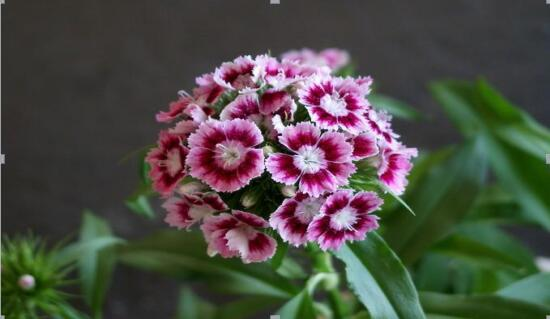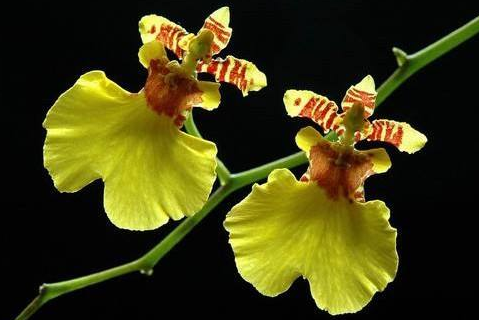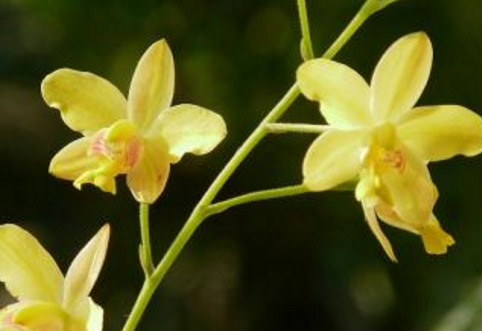Culture methods of Carnation
one。 Light
Carnation needs to keep light for 6 to 8 hours a day. In the middle of summer, full light and exposure should be avoided.
two。 Soil
It is required that the carnation should be planted in a fertile alkaline clayey soil with good drainage, small holes in the base, and can be cultivated in a mixture of garden soil, compost and sandy soil with a ratio of 6: 2: 2.

three。 Watering
Carnation is resistant to drought, so it is best to have slight moisture. In the rainy season, we should pay attention to loosening the soil and drainage, do not let Rain Water gather in the roots, and water in time during the growing and flowering season, so that we can keep slightly wet at ordinary times.
four。 Temperature
The suitable temperature for growth of carnation is between 15 and 20 degrees Celsius. In winter, carnation needs to be placed in a greenhouse and the temperature is kept above 10 degrees Celsius. In summer, it should be kept indoors, where the temperature is lower than that outside.
five。 Fertilizer application
Carnation likes fertilizer, so proper fertilizer is necessary for carnation. It is necessary to prepare a large amount of baking fertilizer before planting carnation, and fertilizer is also needed during the growth period. Generally, the fertilizer is fertilized every ten days, and the selected fertilizer is rotten fertilizer and water, and then fertilized again after flowering.
six。 Matters needing attention
Potted carnation should pay attention to pruning branches, otherwise more branches, will let nutrients scattered out of the flower head is small, the color is dark, after pruning carnation will continue to bloom. During the growth period, attention should be paid to watering and keeping it in a sunny and ventilated place and should be fertilized with tomato fertilizer rich in phosphate. Watering should not allow the basin soil to accumulate water, and the plants will rot and die.
The breeding method of carnation is not difficult, fertilizing when it is just planted and taking good care of it during the growth period. I hope everyone's family can cultivate healthy and colorful carnation flowers.
Culture methods of Dianthus chinensis
Seed propagation is the main one, and it can also be propagated by cuttings or ramets. Seed propagation can be done either in spring or in autumn, but mainly in autumn. Sowing in the open field seedbed in September, covered with a thin layer of soil, or covered with straw without soil cover, watered thoroughly and kept the soil moist, it could germinate after 5-6 days at 20 degrees, and the germination rate could reach 80 "." After the beginning of autumn, combined with pruning and shaping, cutting propagation is carried out. The method is to cut 5 cm long shoots with buds and insert them directly into the sandy soil mixed with river sand and cultured soil to keep the soil moist and shaded properly and take root in about 2-3 weeks.
Carnation is a perennial herbaceous flower with weak persistent roots, which is often cultivated as an annual or biennial plant. Potted carnation requires adequate basal fertilizer, 2-3 plants per pot. Seedlings up to 15 cm high to remove the terminal bud, promote its branches, after the intention to remove axillary buds properly, otherwise more branches, will make nutrients disperse and bloom small, appropriate removal of axillary buds to make nutrient collection, cho make flowers bright when big. During the growth period, it should be placed in the sunny, well-ventilated place to protect, keep the basin soil moist, and apply mature thin liquid fertilizer every 10 days or so. There are too many Rain Water in summer, pay attention to drainage and loosen the soil.
Phyllostachys pubescens is easy to cross, and those who keep the seeds should be planted in isolation. Before blooming, some leaf axillary buds should be removed in time, mainly to ensure that the top buds bloom. It is advisable to water less in winter. If the temperature is kept at 5: 81, it will blossom continuously in winter and spring.
Viewing and application
The flower language of carnation is pure love, talent, boldness and female beauty. Tang Dynasty Sikongshu "Yunyang Temple Carnation Flower" poem: "A farewell from the mountains, meet in this temple." Leaves come out of high and low, and there are no clumps of depth. It is difficult for a wild butterfly to fight for white, but the courtyard gives way to red. Who is sorry for the longest, spring dew to autumn wind. " In the Song Dynasty, Wang Anshi wrote two pieces of carnation flowers, one of which was that spring returned to the valley and the ground was light and red. No one sees a reward for chariots and horses, but it is pitiful to enjoy the spring breeze. All these show that carnation has been an ornamental plant for a long time.
Carnation has lush plants, luxuriant flowers and bright colors, which are widely used in flower beds, flower paths and edge plants, or in rock coffins, and in rock gardens. It is also especially suitable for potted ornamental 3 cut flower varieties with tall and straight pedicels, long-lasting flower arrangement and ornamental flowers. When planted in a large area, it can be used as landscape ground cover material.
Carnation and carnation belong to two species, carnation is a native species and carnation is an exotic species. In modern times, many new varieties of carnation are cultivated, with strong plants, various colors and strong aroma, which is better than that of native carnation.
Culture methods of Dianthus chinensis
Flower name: Carnation alias: Genus Caryophyllus of Blue Snow Family
Carnation
Germination conditions (temperature, soil cover, light requirement, etc.): 20-21 ℃
Days required for germination: 4-10 days
Suitable temperature for growth (daily temperature / night temperature): 10-13 ℃
Light demand for growth and other growth conditions: partial shade or partial light
According to the morphological characteristics, the flowers of Celastraceae have low, tufted plants, and the plant height is only 8 2cm. Leaves linear and long sword-shaped, entire, dark green; spring flowering, head terminal. The flower stem is slender and the florets gather at the top of the flower stem. It is semi-spherical and purplish red.
Reproduction and cultivation, the method of plant division is used, and the suitable period is from autumn to winter. The rotten leaf soil rich in organic matter is the best cultivated soil. Drainage and lighting should be good. Sexual warmth is preferred, high temperature and humidity are avoided, and the suitable temperature for growth is 1 5-25 ℃.
Main habits: tufted herbs for many years, 20-30 cm high, leaves lined, pink to rose-red flowers, terminal head-shaped inflorescences, flower stems about 3 cm, sowing or ramet reproduction, sexual preference for sandy soil with adequate sunshine and good drainage, can be used as flower beds, flower borders, rock gardens, cut flowers and potted flowers.
- Prev

Propagation methods of Oncidium
The ramet propagation of Oncidium is a kind of compound-stemmed orchid. Mature plants will have seed plants, and ramet propagation needs to wait for the pseudobulbs of the seed plants to grow. Generally speaking, the false bulb with two buds is cut off and planted directly in a basin with water moss to keep it moist, which can better promote root growth.
- Next

Prevention and control of diseases of Magnolia bract
1. Symptoms of sheath rust: the pathogen usually occurs on leaves, rarely on branches and stems, with protruding buds with yellow, orange and rusty powdery spores. Although sheath rust does not cause plant death, it can hinder plant growth. Prevention and treatment: first of all, the diseased leaves should be cut off in time.
Related
- Fuxing push coffee new agricultural production and marketing class: lack of small-scale processing plants
- Jujube rice field leisure farm deep ploughing Yilan for five years to create a space for organic food and play
- Nongyu Farm-A trial of organic papaya for brave women with advanced technology
- Four points for attention in the prevention and control of diseases and insect pests of edible fungi
- How to add nutrient solution to Edible Fungi
- Is there any good way to control edible fungus mites?
- Open Inoculation Technology of Edible Fungi
- Is there any clever way to use fertilizer for edible fungus in winter?
- What agents are used to kill the pathogens of edible fungi in the mushroom shed?
- Rapid drying of Edible Fungi

